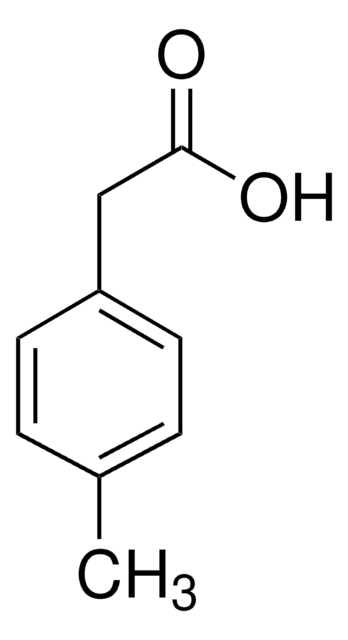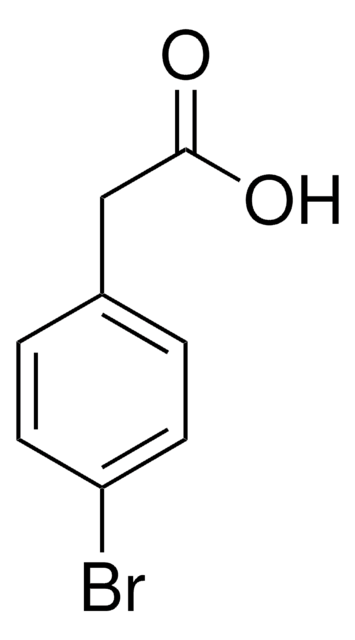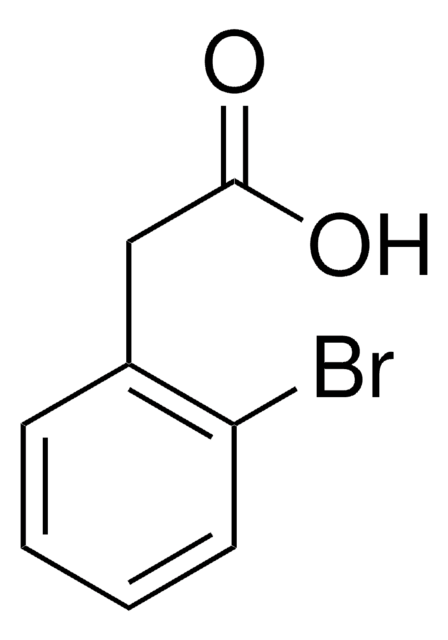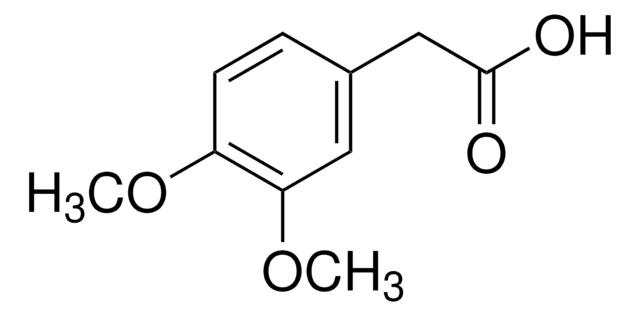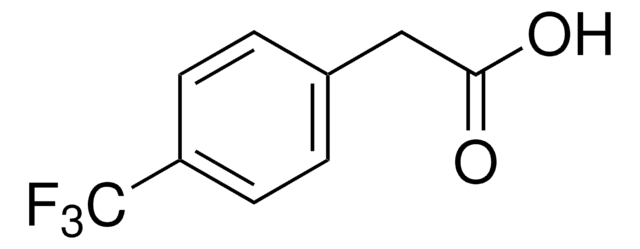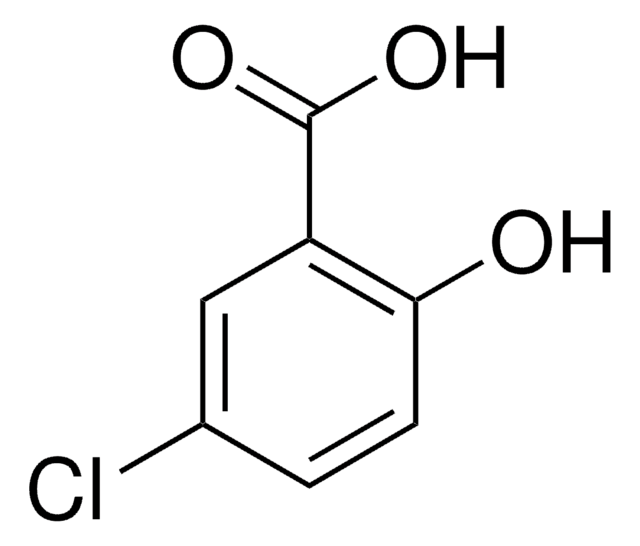139262
4-Chlorophenylacetic acid
ReagentPlus®, 99%
About This Item
Productos recomendados
Quality Level
product line
ReagentPlus®
assay
99%
mp
102-105 °C (lit.)
solubility
ethanol: soluble 100 mg/mL, clear, faintly yellow
functional group
carboxylic acid
chloro
SMILES string
OC(=O)Cc1ccc(Cl)cc1
InChI
1S/C8H7ClO2/c9-7-3-1-6(2-4-7)5-8(10)11/h1-4H,5H2,(H,10,11)
InChI key
CDPKJZJVTHSESZ-UHFFFAOYSA-N
¿Está buscando productos similares? Visita Guía de comparación de productos
Categorías relacionadas
General description
Application
Legal Information
signalword
Warning
hcodes
Hazard Classifications
Acute Tox. 4 Dermal - Acute Tox. 4 Inhalation - Eye Irrit. 2 - Skin Irrit. 2
Storage Class
11 - Combustible Solids
wgk_germany
WGK 3
ppe
dust mask type N95 (US), Eyeshields, Gloves
Elija entre una de las versiones más recientes:
¿Ya tiene este producto?
Encuentre la documentación para los productos que ha comprado recientemente en la Biblioteca de documentos.
Los clientes también vieron
Nuestro equipo de científicos tiene experiencia en todas las áreas de investigación: Ciencias de la vida, Ciencia de los materiales, Síntesis química, Cromatografía, Analítica y muchas otras.
Póngase en contacto con el Servicio técnico
